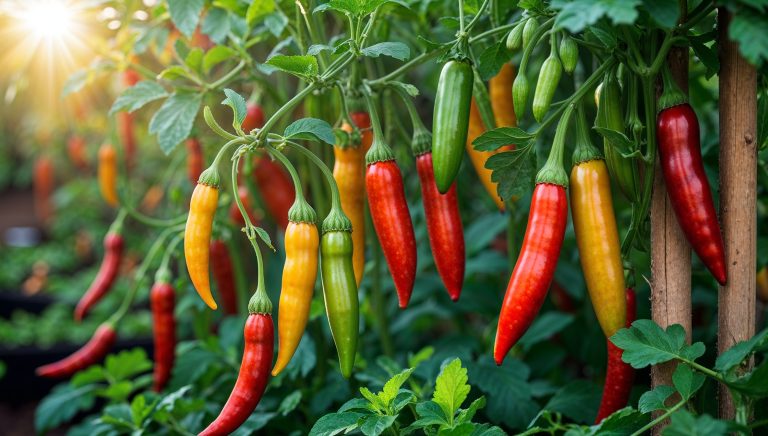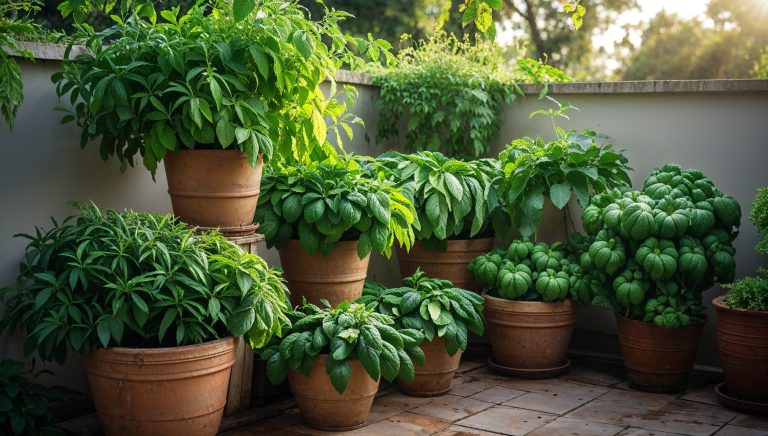Herbs are incredibly rewarding plants to grow, offering both practical and aesthetic benefits. Whether you’re an experienced gardener or just starting out, growing your own herbs can elevate your cooking, improve your garden’s fragrance, and add green beauty to your outdoor space. The good news is that herbs are generally easy to care for, making them perfect for beginners. In this article, we’ll discuss how to grow and care for herbs in your garden, including tips on planting, watering, harvesting, and maintaining these flavorful plants.
1. Choosing the Right Herbs for Your Garden
When selecting herbs for your garden, it’s important to choose varieties that are well-suited to your growing conditions. Factors like climate, soil, and available sunlight will all play a role in determining which herbs will thrive in your garden. Here are some common herbs to consider:
- Basil: This warm-weather herb requires full sunlight and well-drained soil. Basil is great for adding fresh flavor to dishes like pasta, salads, and pizza.
- Mint: Mint is a hardy herb that can grow in both sunny and partially shaded spots. It spreads quickly, so it’s best to plant it in a container to prevent it from overtaking other plants.
- Thyme: A versatile herb that thrives in full sun and well-drained soil, thyme is perfect for adding depth to meats, soups, and sauces.
- Rosemary: Known for its fragrant, needle-like leaves, rosemary loves full sun and dry, sandy soil. It’s excellent for grilling, roasting, and seasoning meats.
- Parsley: Parsley is a cool-season herb that grows well in partial shade and moist, fertile soil. It’s a staple in many culinary dishes and can be harvested continuously.
- Oregano: Oregano prefers full sun and well-drained soil. It’s a great addition to Mediterranean dishes and is easy to grow.
2. Planting Herbs in Your Garden
Planting herbs is relatively simple, but understanding the specific needs of each herb will help ensure they thrive. Here are some general planting tips:
- Planting Location: Most herbs prefer a sunny spot with at least 6 hours of sunlight a day. However, some herbs like mint and parsley can tolerate partial shade. Choose a location that gets plenty of natural light and has good airflow to prevent fungal diseases.
- Soil Preparation: Herbs grow best in well-drained soil. If your soil is heavy or clay-like, amend it with compost or organic matter to improve drainage. Herbs like rosemary and thyme prefer dry, sandy soil, while others like parsley and cilantro prefer moister, nutrient-rich soil.
- Spacing: When planting herbs, be sure to space them according to their needs. Herbs like oregano and mint can spread quickly, so give them plenty of room to grow. Other herbs, like parsley and basil, require more space for their roots to establish. Check the seed packet or plant label for recommended spacing.
- Containers for Herbs: If you don’t have much garden space or want to prevent herbs from spreading uncontrollably, consider planting them in containers. Herbs grow well in pots, and you can move them around to catch the best sunlight. Just make sure the containers have good drainage to prevent waterlogging.
3. Watering Your Herb Garden
Proper watering is crucial for the health of your herbs. While herbs are relatively drought-tolerant, they still need consistent moisture to grow strong and flavorful. Here’s how to water your herb garden:
- Watering Frequency: Water herbs deeply but infrequently, allowing the soil to dry out slightly between waterings. In general, herbs prefer slightly dry soil, so avoid overwatering, as this can lead to root rot and other issues.
- Watering Method: Water at the base of the plants, not on the leaves, to prevent diseases like powdery mildew. Use a watering can or drip irrigation system to provide moisture directly to the soil. Be sure to water thoroughly so the roots get the moisture they need.
- Signs of Overwatering: Overwatered herbs often display yellowing leaves, wilting, or root rot. If you notice these signs, reduce the watering frequency and ensure the soil has proper drainage.
- Signs of Underwatering: On the other hand, underwatered herbs will have dry, crispy leaves and may start to wilt. If you catch this early, water the herbs deeply and adjust your watering schedule.
4. Fertilizing Your Herbs
Most herbs don’t require a lot of fertilizer, as they tend to grow well in moderately rich soil. Over-fertilizing can result in excessive leafy growth with little flavor. Here are some tips for fertilizing herbs:
- Organic Fertilizers: Use organic fertilizers like compost or fish emulsion to feed your herbs. These slow-release fertilizers provide a steady supply of nutrients without overwhelming the plants. Apply fertilizer in the early spring and again mid-season, following the manufacturer’s instructions.
- Avoid Over-Fertilizing: Fertilizing too often can lead to weak, leggy growth. It’s best to apply fertilizer sparingly, especially if your herbs are growing in rich, fertile soil.
- Mulching: Apply a light layer of mulch around your herbs to help retain moisture and keep weeds at bay. Organic mulch, like straw or wood chips, also adds nutrients to the soil as it breaks down.
5. Pruning and Harvesting Herbs
Pruning your herbs regularly helps them grow stronger and encourages new growth. It also ensures you’re harvesting herbs at their peak flavor. Here’s how to prune and harvest your herbs:
- Pruning: Remove dead or damaged leaves regularly to promote healthy growth and prevent disease. For herbs like rosemary and thyme, prune the stems back to encourage bushier growth and prevent them from becoming too woody.
- Harvesting: Harvest your herbs early in the morning when the oils are most concentrated, and the plants are not yet stressed by the heat of the day. For most herbs, it’s best to cut the leaves or stems back regularly to encourage new growth. Avoid cutting back more than one-third of the plant at a time to allow it to continue growing.
- Harvesting Method: For leafy herbs like basil and mint, snip off the top leaves or stems, leaving the lower portion of the plant intact to continue growing. For herbs like rosemary and oregano, cut the stems at a length that allows the plant to regenerate.
- Drying and Storing: If you have a surplus of herbs, you can dry them for later use. Bundle stems together and hang them upside down in a warm, dry place to allow them to air-dry. Once dried, store the herbs in airtight containers, away from direct sunlight, to preserve their flavor and aroma.
6. Pests and Diseases in Your Herb Garden
Although herbs are generally hardy, they can still be susceptible to pests and diseases. Early detection and proper care can help prevent these issues:
- Common Pests: Herbs can attract pests like aphids, spider mites, and whiteflies. You can control these pests by using insecticidal soap, neem oil, or introducing natural predators like ladybugs.
- Diseases: Powdery mildew and leaf spot are common fungal diseases that can affect herbs. To prevent these diseases, avoid overhead watering and provide good air circulation around your plants. If your plants show signs of disease, remove the affected leaves and treat the plant with an appropriate fungicide.
- Weed Control: Weeds can compete with your herbs for nutrients and water. Keep your herb garden free of weeds by mulching, hand-pulling, or using organic weed control methods.
7. Winter Care for Herbs
In colder climates, many herbs will go dormant in the winter months. Here’s how to care for herbs during the colder season:
- Bringing Herbs Indoors: If you live in an area with cold winters, consider bringing potted herbs indoors before the first frost. Place them in a sunny spot near a window or under grow lights to provide the light they need.
- Winterizing Perennials: Some hardy perennial herbs, like sage and thyme, can survive the winter outdoors if properly cared for. Mulch around the base of the plants to protect the roots from freezing temperatures.
- Cutting Back: In the fall, prune back dead or damaged stems from your herb plants. This will help them survive the winter and encourage healthy growth when spring arrives.
Conclusion
Caring for herbs in your garden is a simple and rewarding experience that can add flavor to your meals and beauty to your garden. By selecting the right herbs for your space, providing proper soil, water, and light, and pruning regularly, you can enjoy a thriving herb garden year-round. With a little attention and care, your herb garden will be a source of fresh ingredients and a lovely addition to your home.

